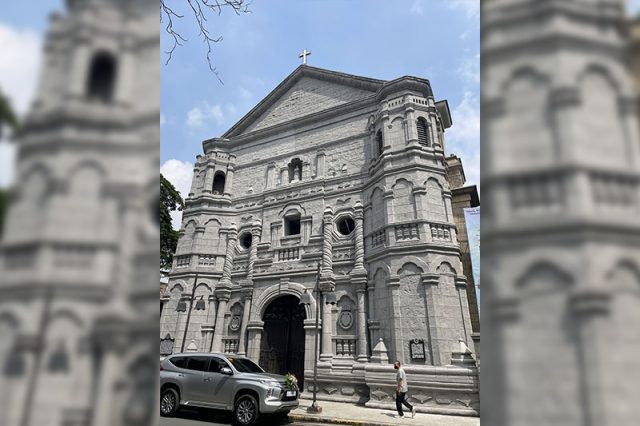
A more refined appearance of the Malate Church‘s facade caught the attention of a local community on a forum website.
Reddit user “PainterImpossible368” shared pictures of the facades of the church, also known as Our Lady of Remedies Parish, on the r/Philippines subreddit and noted how it has changed.
“Malate Church after its Restoration,” the Redditor said.
“Malate Church was first built in 1588, and was dedicated to Nuestra Señora de los Remedios. The church is a Baroque-style [overlooking] Plaza Rajah Sulayman and the Manila Bay,” the user added.
The left side of the photo showed a grimier version of the church, while the right side featured the structure in its cleaner and more pristine state.
Malate Church after its Restoration
byu/PainterImpossible368 inPhilippines
The post has reached 1,100 upvotes and over 100 comments so far, with Filipinos sharing varying opinions about the clean version of the church’s facade.
A Redditor said the refined appearance makes it appear as if it was a “3D printed church.”
Another Reddit user said that while the clean facade makes it seem like the Malate Church was “a cartoon art,” it still “looks so good.”
“May napuntahan din ako church sa Lucban, ni-restore sa labas pero hinayaan nila [‘yung] lumot,” the Redditor added.
“I probably just got used to the appearance in the left photograph, but the new look makes me think that it’s a movie set,” another Reddit user said.
“I kinda like the old ‘patina’, but the clean version looks good too,” wrote a different Pinoy.
“NGL [Not gonna lie], the old one look cooler, the cleaned one looked like a badly rendered video game, which texture assets didn’t load up,” wrote another Redditor.
Others praised the Escuela Taller de Manila for their craftsmanship.
“Decades worth of grime and smoke were cleaned off, as well as plants that tend to destroy the walls of old churches. Then it was re-plastered to protect the adobe walls from the elements. A masterpiece by the artisans of Escuela Taller de Manila,” a Reddit user said.
A look at the Facebook page of the Malate Church reveals that it first showed the clean facade last February.
The Escuela Taller de Filipinas Foundation, Inc. also shared the importance of cleaning as a “basic component of preventive conservation” in a Facebook post in the same month.
“It is important to periodically remove undesired matter (e.g. grime, dirt and other foreign matter) which could promote the active degradation and erosion of masonry units and may also cause the loss of original architectural and surface details,” it said before.
“While it is a basic intervention in preventive conservation or a preliminary activity which is undertaken before any advance conservation or restoration procedures, it should be done with utmost care and caution,” Escuela Taller added.
It also shared the consequences of failing to clean heritage structures.
“If the cleaning intervention is not correctly performed, it may irreversibly damage not just the surface, but the original substrate of heritage structures being cleaned. Thus, it is imperative to plan and consider the cleaning method and procedure to follow,” the foundation added.
Escuella Taller accompanied its post by sharing pictures of its work on the Malate Church and the Paco Park.
The Escuela Taller is a vocational school that trains out-of-school youth to become protectors of the country’s cultural heritage structures through practical courses.
Its graduates have worked on more than 20 heritage site restoration projects, including old churches, historical buildings, cemeteries, and ancestral houses all over the country.
RELATED: Why La Loma Chapel has a new yellow and white façade
Meanwhile, the Colonial-era Malate Church houses the statue of the Our Lady of Remedies which was brought over from Spain in 1624.
It was declared an “important cultural property” by the National Museum of the Philippines.
Important cultural properties may receive subsidies and other supporting measures from the government for their preservation and conservation.
These establishments are defined as cultural properties possessing “exceptional cultural, artistic, and/or historical significance.”
It is the second level of protection after the classification of National Cultural Treasures.









